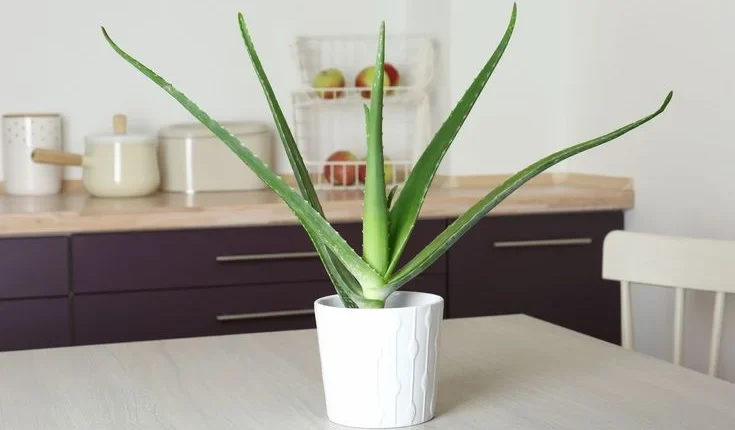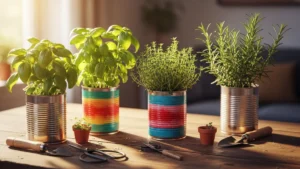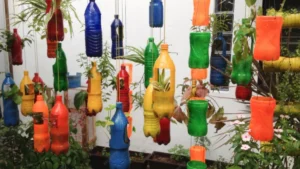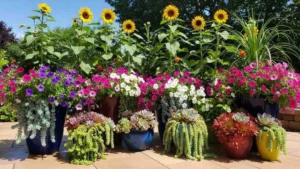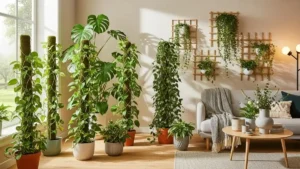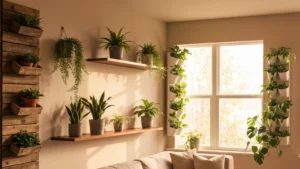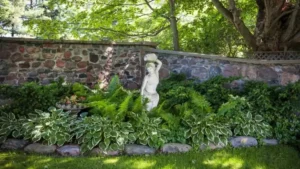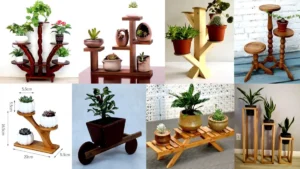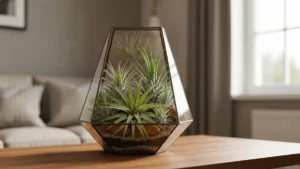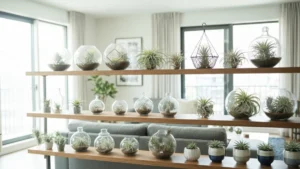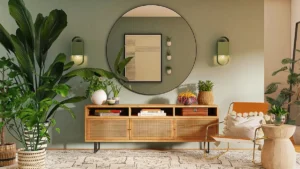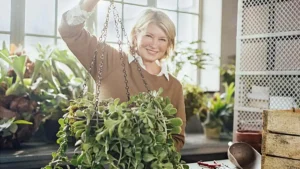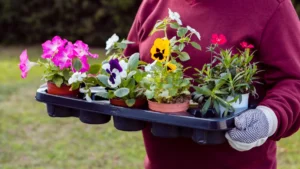Growing aloe vera indoors has become increasingly popular among plant lovers and homeowners. Known for its healing gel and attractive appearance, aloe vera is more than just a decorative plant. It serves as a natural air purifier, a low-maintenance succulent, and a handy remedy for minor burns or skin issues.
By learning how to care for aloe vera in your home, you can enjoy its beauty and benefits year-round. In this guide, you’ll discover everything from choosing the right pot to ensuring proper sunlight, watering techniques, and even solving common plant problems.
Why Growing Aloe Vera Indoors Is a Smart Choice
Aloe vera is an excellent choice for indoor gardening because of its resilience and versatility. Unlike many houseplants that require constant attention, aloe vera thrives with minimal care.
Furthermore, aloe plants adapt well to various environments, making them perfect for beginners. They also produce offsets (baby plants) that can be repotted, allowing you to grow your indoor collection without additional cost.
Best Environment for Growing Aloe Vera Indoors
The best environment for growing aloe vera indoors combines bright, indirect sunlight, warm temperatures, and low humidity. Aloe vera is a succulent that thrives in conditions similar to its natural desert habitat, so placing it near a sunny window, preferably south- or west-facing, helps the plant stay healthy and strong.
Indoor temperatures between 60°F and 75°F (15°C–24°C) are ideal, while sudden drafts or heat vents should be avoided to prevent stress on the leaves.
Since aloe vera stores water in its fleshy foliage, it does not require high humidity and actually performs better in drier air. By recreating this environment, you ensure that your aloe vera plant flourishes indoors, producing vibrant green leaves and long-lasting growth.
1. Light Needs for Aloe Vera Grown Indoors
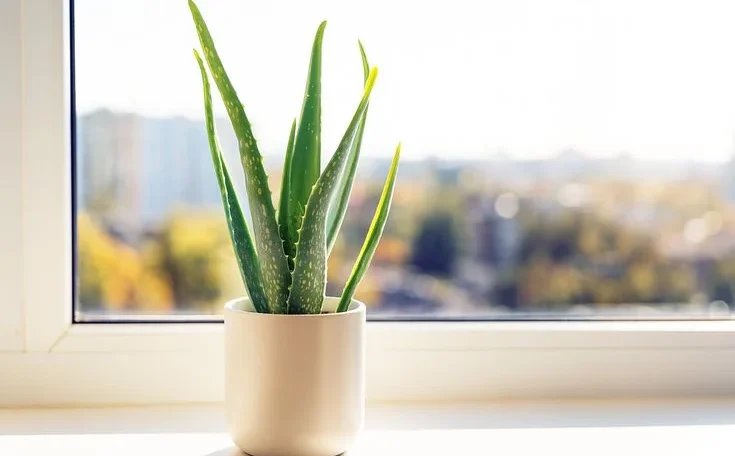
Aloe vera loves bright, indirect sunlight. Place your plant near a south- or west-facing window where it receives at least 6 hours of light.
If natural light is limited, consider using a grow light to supplement. This transition ensures your aloe vera doesn’t stretch or become weak due to insufficient exposure.
2. Temperature and Humidity for Indoor Aloe Plants
Aloe vera prefers temperatures between 60°F and 75°F (15°C–24°C). Luckily, this aligns well with typical indoor conditions.
Avoid placing your plant near heating vents, radiators, or drafty windows, as extreme fluctuations can damage the leaves.
Choosing the Right Pot and Soil for Aloe Vera Indoors
When choosing the right pot and soil for aloe vera indoors, it’s essential to focus on drainage and aeration. Aloe vera plants are prone to root rot if left in standing water, so always select a pot with drainage holes. Terracotta or clay pots are highly recommended because they allow excess moisture to evaporate, keeping the roots dry and healthy.
Equally important is the soil aloe vera thrives best in a cactus or succulent mix, which is designed for fast drainage. If you prefer to make your own blend, combine regular potting soil with sand or perlite to increase airflow and reduce compactness.
By using the proper pot and soil combination, you create the perfect foundation for strong, disease-free aloe vera growth indoors.
1. Selecting the Best Pot
The container you choose plays a vital role in aloe vera’s growth. Always pick a pot with drainage holes to prevent water from pooling at the roots.
Terracotta pots are highly recommended because they allow moisture to evaporate quickly, reducing the risk of root rot.
2. Soil Requirements
Aloe vera thrives in well-draining soil. Use cactus or succulent mix for the best results.
Alternatively, you can create your own soil blend by mixing regular potting soil with sand or perlite. This ensures proper aeration and prevents soggy conditions.
Watering Tips for Growing Aloe Vera Indoors

Watering is the most common mistake people make when growing aloe vera indoors. Aloe plants store water in their leaves, meaning they need less frequent watering than traditional houseplants.
As a rule of thumb, water your aloe deeply but infrequently. Wait until the top 2–3 inches of soil are completely dry before watering again. During winter, reduce watering even further because the plant’s growth slows down.
Transitioning to a mindful watering routine ensures your aloe remains healthy and avoids root rot.
Fertilizing Aloe Vera
Aloe vera doesn’t require heavy feeding. Fertilize once every spring and summer with a balanced, diluted succulent fertilizer.
Over-fertilizing can harm the roots, so always stick to the recommended amount. With the right balance, your aloe will maintain lush, green leaves and steady growth.
Repotting Aloe Vera
Aloe vera plants eventually outgrow their pots. You may notice roots pushing out of the drainage holes or offsets crowding the container.
When repotting, carefully remove the plant, trim damaged roots, and place it in fresh succulent soil. Repotting every 2–3 years promotes healthy growth and prevents overcrowding.
Common Problems and Solutions
When growing aloe vera indoors, it’s common to face issues like yellowing leaves, brown tips, drooping growth, or occasional pests. Most of these problems are linked to overwatering, insufficient light, or poor soil drainage.
The good news is that solutions are simple: allow the soil to dry completely before watering, place your plant in bright indirect sunlight, and use a well-draining succulent mix to prevent root rot. If pests like mealybugs appear, gentle cleaning with rubbing alcohol or insecticidal soap usually resolves the issue. For more tips on caring for a larger variety, check out our guide on the large aloe vera plant to ensure your indoor succulent thrives.
By identifying these common problems early and applying quick solutions, your indoor aloe vera plant can remain healthy, vibrant, and long-lasting.
1. Yellowing Leaves
Overwatering is usually the culprit. Allow the soil to dry completely before watering again.
2. Brown Tips
This may result from underwatering, low humidity, or too much direct sunlight. Adjust care accordingly to restore the leaves.
3. Pests
Aloe vera can occasionally attract pests like mealybugs or aphids. Use a gentle insecticidal soap or wipe leaves with diluted rubbing alcohol to eliminate them.
Benefits of Growing Aloe Vera Indoors
- Air Purification: Aloe removes harmful toxins from indoor air.
- Natural First Aid: The gel soothes burns, cuts, and dry skin.
- Aesthetic Appeal: Its unique shape and vibrant green color enhance any space.
- Low Maintenance: Perfect for busy individuals who still want indoor greenery.
For more on aloe vera’s health benefits, you can explore Medical News Today’s aloe vera guide.
Tips for Long-Term Aloe Vera Care
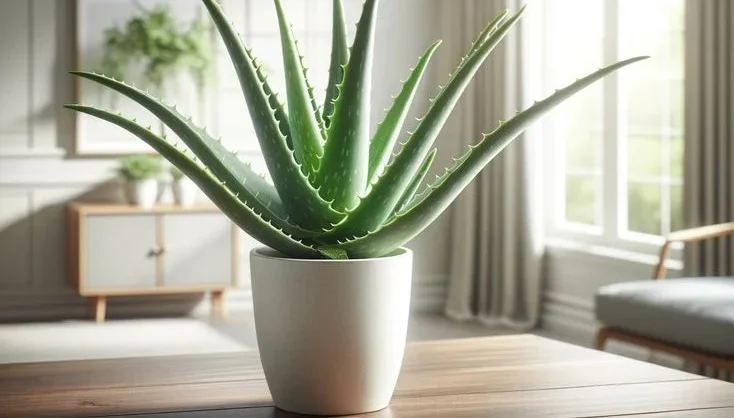
- Rotate the pot occasionally for even sunlight exposure.
- Wipe leaves gently to remove dust and allow better photosynthesis.
- Avoid overhandling the plant, as leaves can snap easily.
- Propagate offsets to create new plants and expand your indoor garden.
FAQs
How often should I water aloe vera indoors?
Water aloe vera every 2–3 weeks, allowing the soil to dry completely between watering. In winter, extend the gap to 4 weeks.
Can aloe vera survive in low light?
Aloe vera prefers bright light but can tolerate low light for short periods. Long-term low light leads to leggy, weak growth.
Is aloe vera toxic to pets?
Yes, aloe vera is mildly toxic to cats and dogs if ingested. Keep your plant out of reach of pets.
How do I use aloe vera gel at home?
Cut a mature leaf, scoop out the gel, and apply directly to minor cuts, burns, or dry skin. Always test a small area first to avoid irritation.
Conclusion
Growing aloe vera indoors is one of the easiest and most rewarding ways to bring greenery into your home. With the right light, soil, watering schedule, and occasional care, your aloe plant will thrive year-round. Choosing the proper potting mix is essential, and you can find an ideal option in our detailed guide on aloe vera potting soil.
Beyond being a beautiful houseplant, aloe vera doubles as a natural remedy and air purifier, making it a must-have for every household. Whether you’re a beginner or an experienced gardener, aloe vera is the perfect indoor companion.

